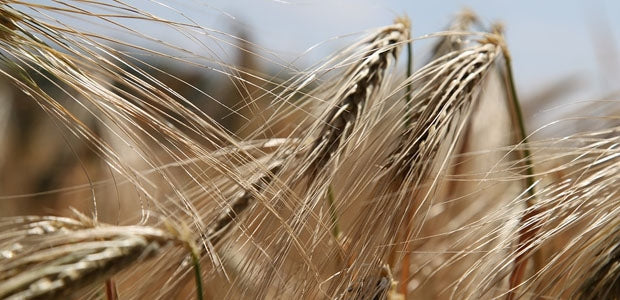With or without gluten?
By Véronique Cousineau, ND, RHN
Ah! good wheat bread, many people's best friend and some people's enemy. Wheat or gluten-containing products have been the subject of much discussion in recent years, creating uncertainty for some and inconvenience for others. But what is gluten really, and why is it the subject of so much debate?
What is gluten?
Gluten is a protein found in certain grains. Bakers appreciate its viscous, elastic properties, which enhance the kneading of bread and the manufacture of pastry products. In fact, the Latin word gluten, means glue.
Where is it found?
Gluten occurs naturally in wheat, spelt, kamut, barley, rye, triticale and sometimes oats. Often, the gluten protein is isolated in a factory, to be added to various foods. This increases the viscous and elastic properties of factory-produced products such as certain cereals, candy bars, pasta, pastries, broths, soups, sauces, marinades, seasonings, condiments, crackers, croutons, chips, fried foods, deli meats and some candies. Gluten is also present in some hard liquors and most beers. Many cosmetic products also contain gluten!
Why are we talking so much about it?
Gluten is gaining in popularity as much through the controversy as the praise that surrounds it. Between activist authors who swear by gluten-free diets and contradictory clinical studies, it's sometimes hard to tell the difference. Here's a brief overview...
In ancient times, agriculture was rather non-invasive. Mother Nature's bounty was cultivated with respect and dignity, without interfering with any natural process. Unfortunately, the picture today is very different. With billions of people to feed, heightened consumer expectations and a food processing industry that has taken off in leaps and bounds, grain hybridization has come into its own. This technique, similar to genetic modification, is used to obtain grains with specific, controllable properties. Wheat has been particularly hard hit. It has undergone major modifications, and this ancient grain is now very different from its ancestral form. Moreover, genetic manipulation and hybridization techniques have made grains much more allergenic and inflammatory, hence the interest in gluten-free and processed grain-free diets.
On the other hand, we now know that the more a food is consumed on a regular basis, the greater the chances of developing an allergy or intolerance. That's why it's estimated that gluten intolerance has quadrupled since gluten was added to a multitude of foods in factories.
Grain modification and over-consumption are therefore at the root of the rise in gluten reactivity.
Intolerance or allergy?
It's sometimes difficult to tell the difference between an allergy and an intolerance based on symptoms. Many experts tell us that food allergy symptoms are limited to the digestive tract, while others believe that, on the contrary, symptoms can be systemic, manifesting themselves at physical and psychological levels. As a general rule, an allergy provokes an immune response that can be measured by blood tests, which is not the case with intolerance. Be that as it may, gluten protein makes people ill, and the symptoms that have been catalogued are vast. The list below speaks for itself, demonstrating the wide range of symptoms that can be linked to gluten consumption:
Signs of allergy and/or intolerance :
- Irritability
- Unexplainable fatigue
- Mood, behaviour and/or attention disorders
- Recurrent mouth ulcers
- Celiac disease
- Crohn's disease
- Ulcerative colitis
- Irritable bowel syndrome
- Eczema and psoriasis
- Episodes of depression or confusion after gluten ingestion
- Inflammation
- Arthritis and rheumatism
- Autoimmune diseases
- Inability to lose weight
- Thyroid gland disorder
- Addiction to gluten products
- Gas and bloating
- Gastric reflux
Adopting a gluten-free diet?
If you have one or more of the symptoms listed above, you may benefit from a gluten-free diet. Adopting such dietary habits can be done gradually, taking care to educate yourself about which foods to avoid and which to replace. Start by reducing your bread consumption, then replace it with gluten-free alternatives. Rethink your breakfasts and lunches to bring variety and density to your plate; it goes without saying that food should be rich in nutrients. Above all, don't hesitate to make an appointment with a naturopath or nutritherapist to guide you through these changes.
We wish you good health!
Véronique Cousineau, ND, RHN


